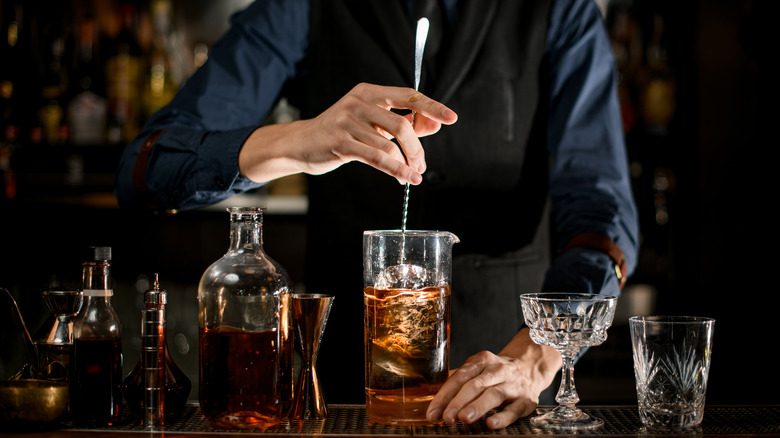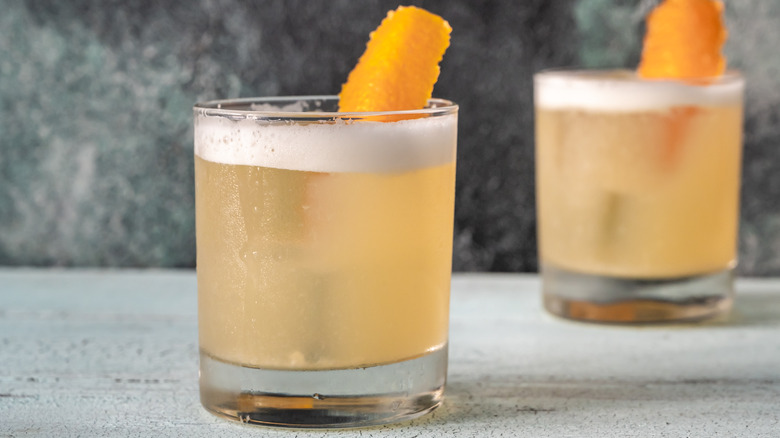Ordering Your Cocktail Stirred Is A Little More Complex Than It Sounds
Shaken or stirred, does the way a cocktail is mixed really matter? After all, both techniques work to combine liquids and seem to get the job done effectively. Yet, while the two methods don't seem so different on a surface level, they couldn't be more contrary when it comes to the impact they have on a drink's taste and texture. They aren't as interchangeable as they seem, so you might want to rethink ordering a classically shaken cocktail, stirred.
Along with marrying flavors together, drinks are mixed to chill and dilute boozy concoctions; the exact temperature and degree of dilution depend on whether they're shaken or stirred. Shaken cocktails may be colder, but they're also more diluted as ice breaks and melts as it moves about in the shaker, producing almost the exact opposite outcome of a stirred tipple. Not to mention that following all that agitation, bevvies tend to be more textured with a hazy appearance. Given all these seeming "disadvantages," it would be fair to assume that shaken cocktails would fare better if they were instead stirred. However, you'd be wrong.
Some cocktails just aren't meant to be stirred
Stirred cocktails may indeed lend themselves more easily to being shaken, but the same is rarely true of traditionally shaken cocktails being stirred. For example, a Negroni or a martini may just risk increased dilution and aeration after being tossed around in a shaker, but when it comes to a daiquiri or a margarita, the entire cocktail is jeopardized as a result of stirring. As for why this may be the case, the answer lies within a drink's ingredient list.
Generally, most mixologists agree that cocktails made with citrus juices, dairy, eggs, or any other ingredients that border on opaque should always be shaken, as this allows for better emulsification of ingredients. Consequently, stirring (no matter how vigorous) won't meld these ingredients together quite the same way that shaking will, nor will it deliver that same creamy texture iconic of foam-topped whiskey sour. In contrast, stirring is best reserved for drinks made with transparent liquids like liquors, bitters, or tonics to minimize aeration and maintain their silky or bubbly profiles.
Although some rules are meant to be broken, when ordering a made-to-be-shaken cocktail stirred, it's probably wise to stick to the status quo.

